Andrej Rode
Novel Phase-Noise-Tolerant Variational-Autoencoder-Based Equalization Suitable for Space-Division-Multiplexed Transmission
Sep 17, 2025Abstract:We demonstrate the effectiveness of a novel phase-noise-tolerant, variational-autoencoder-based equalization scheme for space-division-multiplexed (SDM) transmission in an experiment over 150km of randomly-coupled multi-core fibers.
Constellation Shaping for OFDM-ISAC Systems: From Theoretical Bounds to Practical Implementation
Sep 04, 2025Abstract:Integrated sensing and communications (ISAC) promises new use cases for mobile communication systems by reusing the communication signal for radar-like sensing. However, sensing and communications (S&C) impose conflicting requirements on the modulation format, resulting in a tradeoff between their corresponding performance. This paper investigates constellation shaping as a means to simultaneously improve S&C performance in orthogonal frequency division multiplexing (OFDM)-based ISAC systems. We begin by deriving how the transmit symbols affect detection performance and derive theoretical lower and upper bounds on the maximum achievable information rate under a given sensing constraint. Using an autoencoder-based optimization, we investigate geometric, probabilistic, and joint constellation shaping, where joint shaping combines both approaches, employing both optimal maximum a-posteriori decoding and practical bit-metric decoding. Our results show that constellation shaping enables a flexible trade-off between S&C, can approach the derived upper bound, and significantly outperforms conventional modulation formats. Motivated by its practical implementation feasibility, we review probabilistic amplitude shaping (PAS) and propose a generalization tailored to ISAC. For this generalization, we propose a low-complexity log-likelihood ratio computation with negligible rate loss. We demonstrate that combining conventional and generalized PAS enables a flexible and low-complexity tradeoff between S&C, closely approaching the performance of joint constellation shaping.
Joint Optimization of Geometric and Probabilistic Constellation Shaping for OFDM-ISAC Systems
Jan 20, 2025
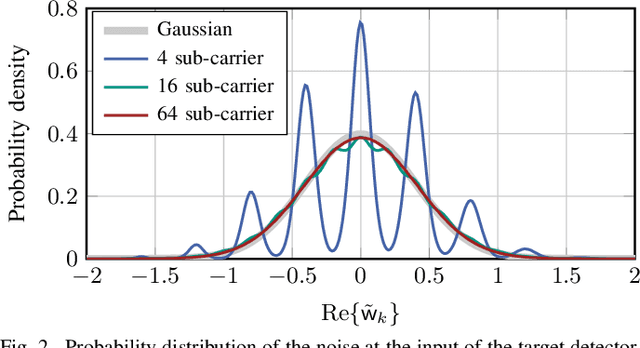

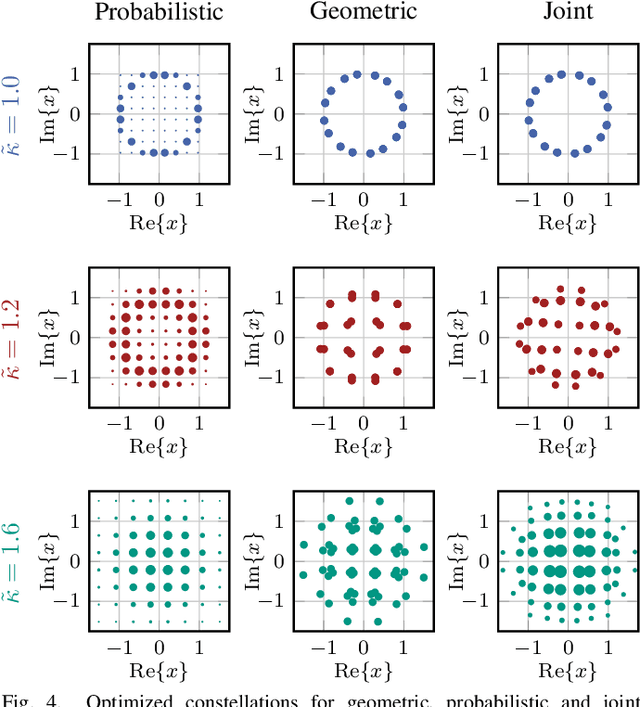
Abstract:6G communications systems are expected to integrate radar-like sensing capabilities enabling novel use cases. However, integrated sensing and communications (ISAC) introduces a trade-off between communications and sensing performance because the optimal constellations for each task differ. In this paper, we compare geometric, probabilistic and joint constellation shaping for orthogonal frequency division multiplexing (OFDM)-ISAC systems using an autoencoder (AE) framework. We first derive the constellation-dependent detection probability and propose a novel loss function to include the sensing performance in the AE framework. Our simulation results demonstrate that constellation shaping enables a dynamic trade-off between communications and sensing. Depending on whether sensing or communications performance is prioritized, geometric or probabilistic constellation shaping is preferred. Joint constellation shaping combines the advantages of geometric and probabilistic shaping, significantly outperforming legacy modulation formats.
Introducing RSESS: An Open Source Enumerative Sphere Shaping Implementation Coded in Rust
Feb 13, 2024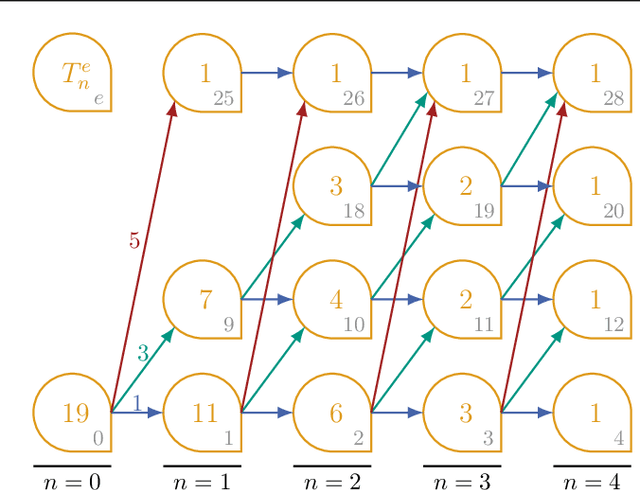
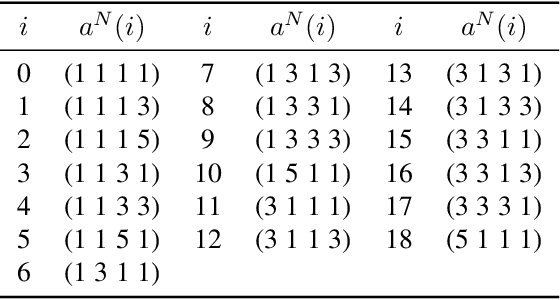
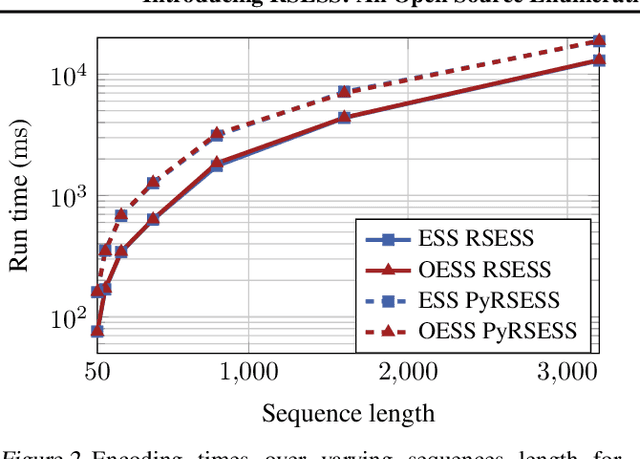
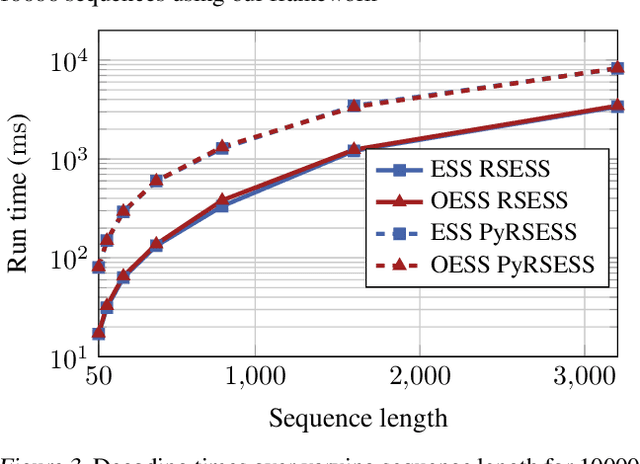
Abstract:In this work, we present an open-source implementation of the enumerative sphere shaping (ESS) algorithm used for probabilistic constellation shaping (PCS). PCS aims at closing the shaping gap caused by using uniformly distributed modulation symbols in channels for which information theory shows non-uniformly distributed signaling to be optimal. ESS is one such PCS algorithm that sets itself apart as it operates on a trellis representation of a subset of the possible symbol sequences. ESS leads to an empirical distribution of the symbols that closely approximates the optimal distribution for the additive white Gaussian noise (AWGN) channel. We provide an open-source implementation of this algorithm in the compiled language Rust, as well as Python bindings with which our Rust code can be called in a regular Python script. We also compare simulation results on the AWGN channel using our implementation with previous works on this topic.
Approximate Maximum a Posteriori Carrier Phase Estimator for Wiener Phase Noise Channels using Belief Propagation
Jul 07, 2023
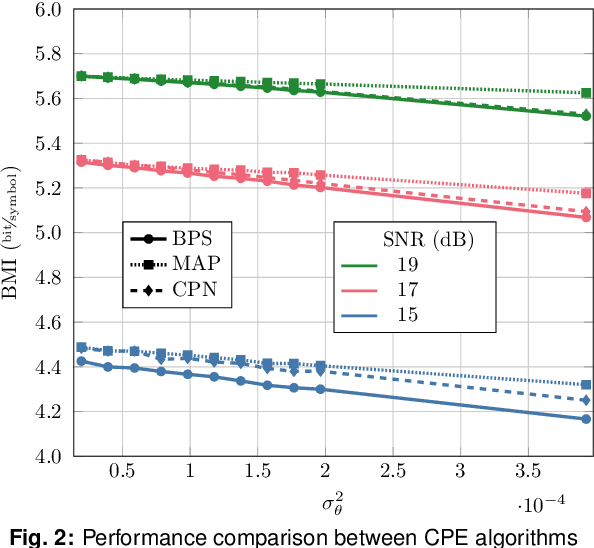
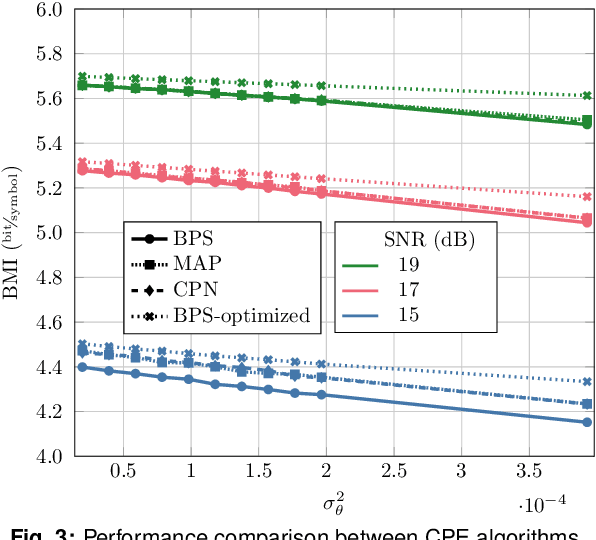
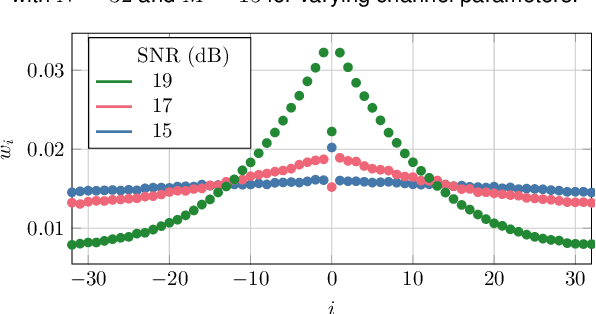
Abstract:The blind phase search (BPS) algorithm for carrier phase estimation is known to have sub-optimal performance for probabilistically shaped constellations. We present a belief propagation based approximate maximum a posteriori carrier phase estimator and compare its performance with the standard and an improved BPS algorithm.
Optimized Geometric Constellation Shaping for Wiener Phase Noise Channels with Viterbi-Viterbi Carrier Phase Estimation
Jul 03, 2023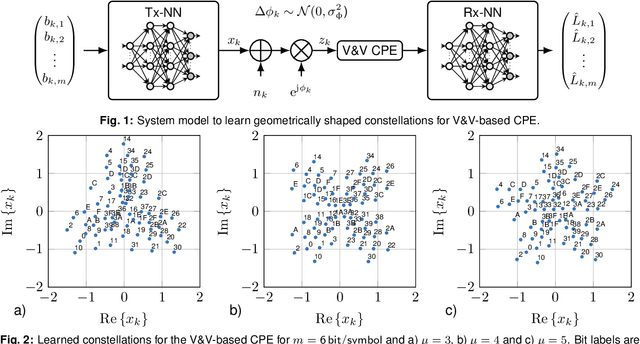
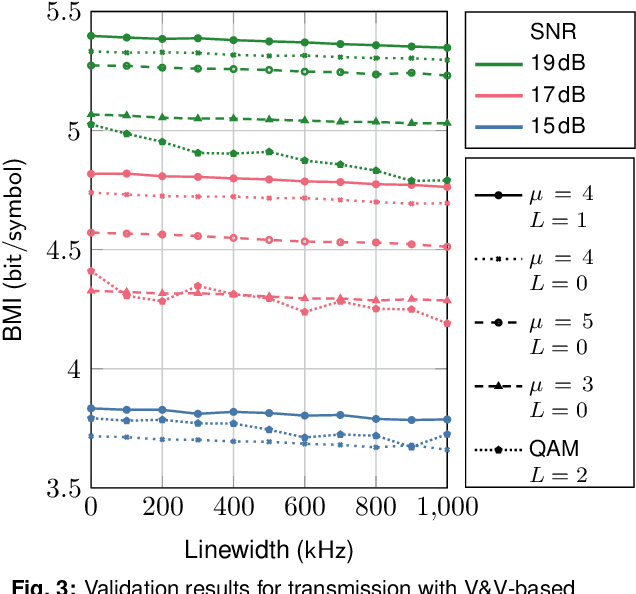
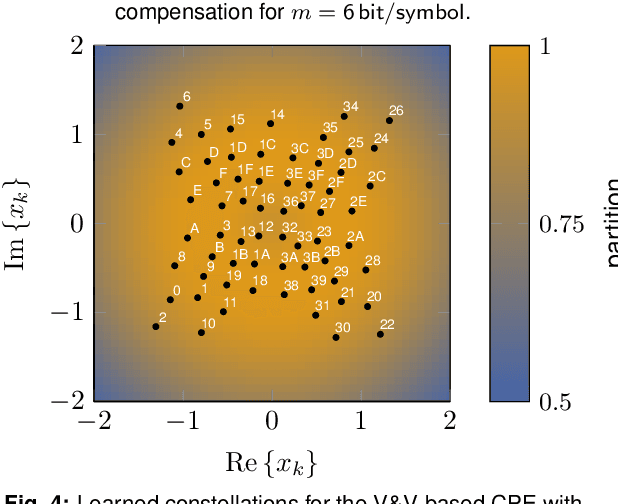
Abstract:The Viterbi & Viterbi (V&V) algorithm is well understood for QPSK and 16-QAM, but modifications are required for higher-order modulation formats. We present an approach to extend the standard V&V algorithm for higher-order modulation formats by modifying the transmit constellation with geometric constellation shaping.
End-to-end Optimization of Constellation Shaping for Wiener Phase Noise Channels with a Differentiable Blind Phase Search
Dec 07, 2022
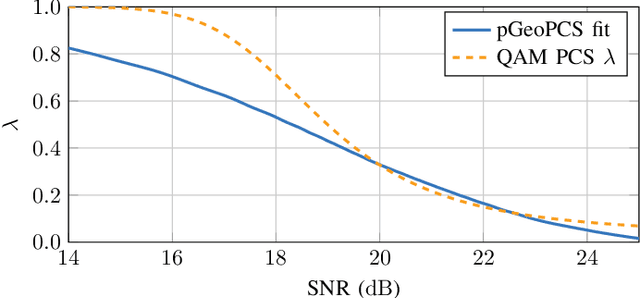
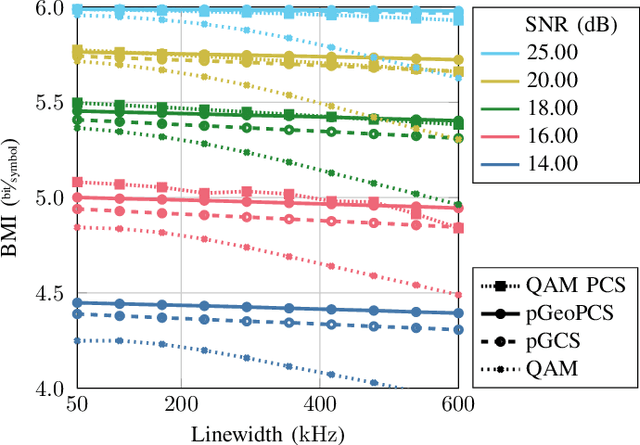
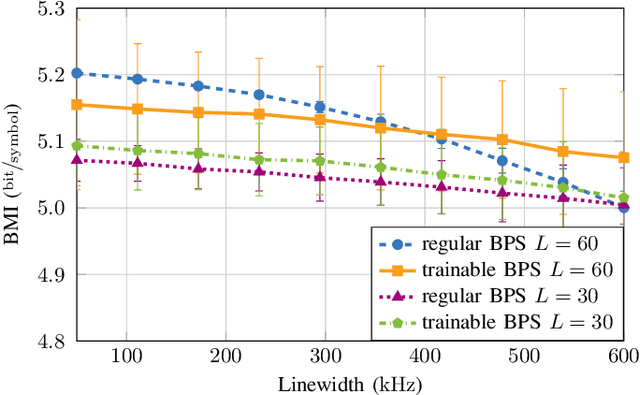
Abstract:As the demand for higher data throughput in coherent optical communication systems increases, we need to find ways to increase capacity in existing and future optical communication links. To address the demand for higher spectral efficiencies, we apply end-to-end optimization for joint geometric and probabilistic constellation shaping in the presence of Wiener phase noise and carrier phase estimation. Our approach follows state-of-the-art bitwise auto-encoders, which require a differentiable implementation of all operations between transmitter and receiver, including the DSP algorithms. In this work, we show how to modify the ubiquitous blind phase search (BPS) algorithm, a popular carrier phase estimation algorithm, to make it differentiable and include it in the end-to-end constellation shaping. By leveraging joint geometric and probabilistic constellation shaping, we are able to obtain a robust and pilot-free modulation scheme improving the performance of 64-ary communication systems by at least 0.1bit/symbol compared to square QAM constellations with neural demappers and by 0.05 bit/symbol compared to previously presented approaches applying only geometric constellation shaping.
Geometric Constellation Shaping with Low-complexity Demappers for Wiener Phase-noise Channels
Dec 05, 2022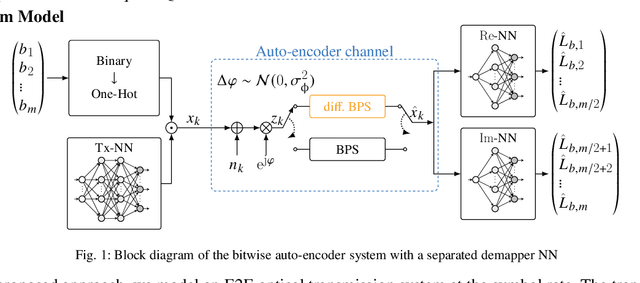


Abstract:We show that separating the in-phase and quadrature component in optimized, machine-learning based demappers of optical communications systems with geometric constellation shaping reduces the required computational complexity whilst retaining their good performance.
Structural Optimization of Factor Graphs for Symbol Detection via Continuous Clustering and Machine Learning
Nov 21, 2022



Abstract:We propose a novel method to optimize the structure of factor graphs for graph-based inference. As an example inference task, we consider symbol detection on linear inter-symbol interference channels. The factor graph framework has the potential to yield low-complexity symbol detectors. However, the sum-product algorithm on cyclic factor graphs is suboptimal and its performance is highly sensitive to the underlying graph. Therefore, we optimize the structure of the underlying factor graphs in an end-to-end manner using machine learning. For that purpose, we transform the structural optimization into a clustering problem of low-degree factor nodes that incorporates the known channel model into the optimization. Furthermore, we study the combination of this approach with neural belief propagation, yielding near-maximum a posteriori symbol detection performance for specific channels.
Optimization of Geometric Constellation Shaping for Wiener Phase Noise Channels with Varying Channel Parameters
Jun 29, 2022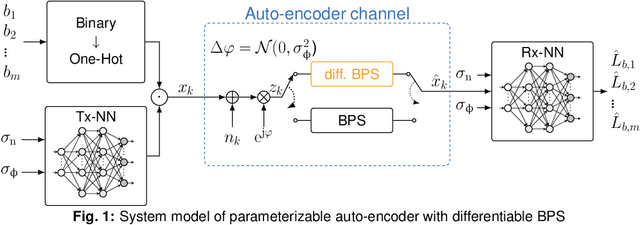
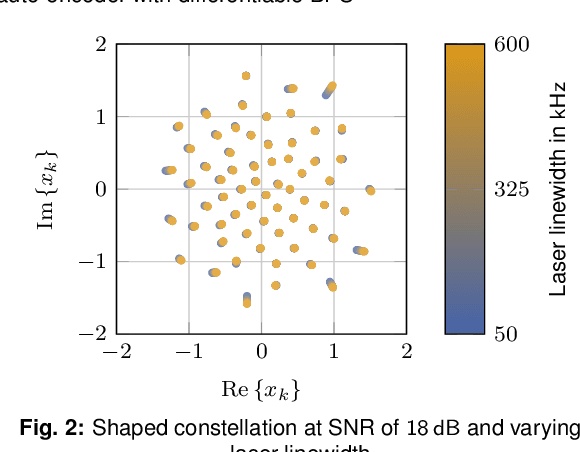
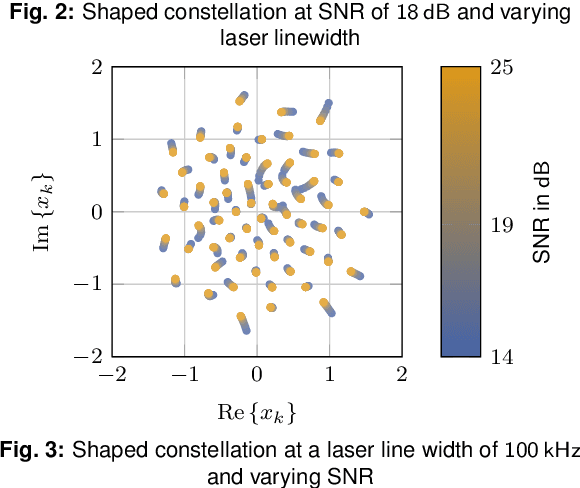
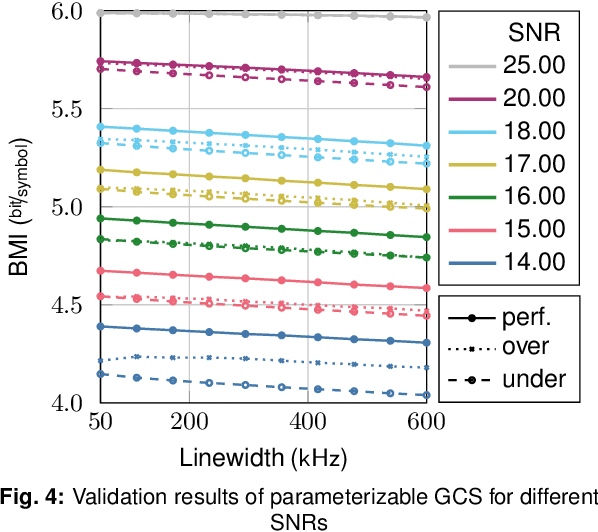
Abstract:We present a novel method to investigate the effects of varying channel parameters on geometrically shaped constellations for communication systems employing the blind phase search algorithm. We show that introduced asymmetries significantly improve performance if adapted to changing channel parameters.
 Add to Chrome
Add to Chrome Add to Firefox
Add to Firefox Add to Edge
Add to Edge